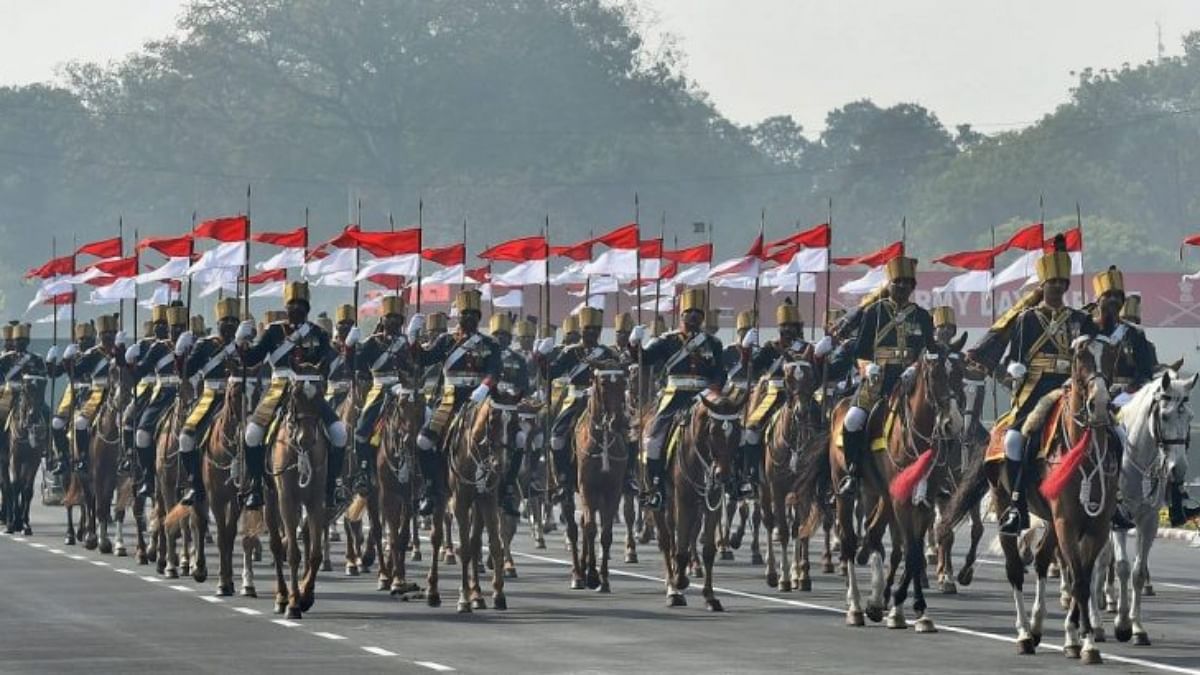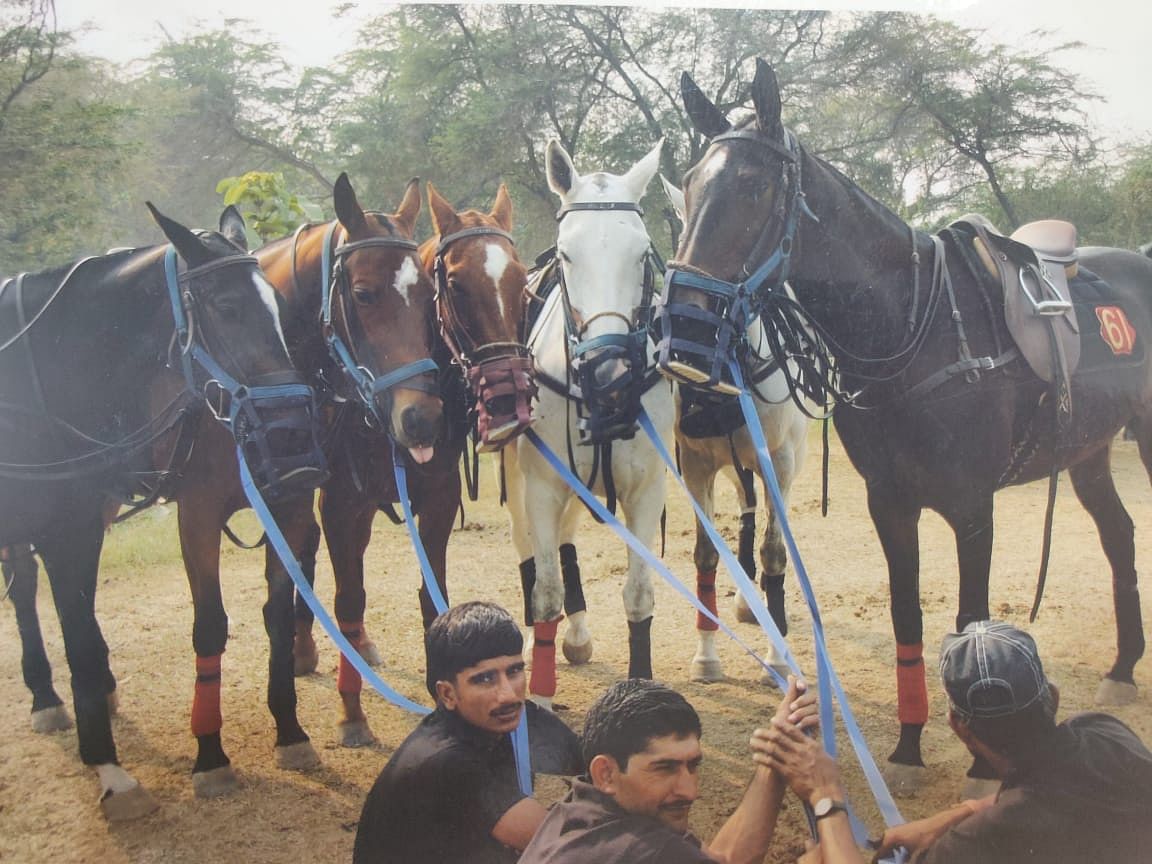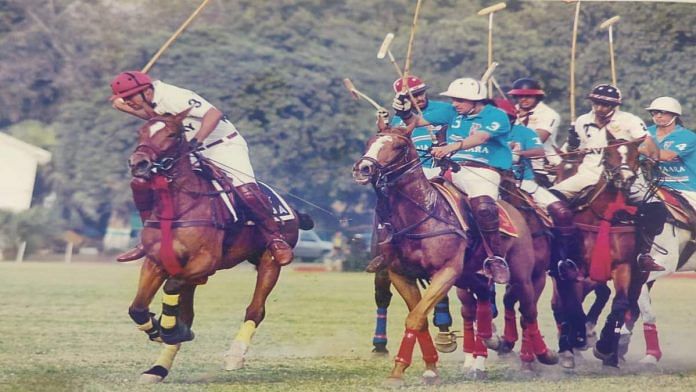New Delhi: Former Prime Minister Pandit Jawaharlal Nehru had once said: “India must preserve a horsed cavalry regiment which shall serve as a link between the past and the present.”
Preserved for decades, this link is now on the verge of being broken, as the Army decides to sacrifice nostalgia at the altar of pragmatism to sharpen its combat edge and cut expenses.
The 61st cavalry regiment, one of the last mounted cavalry units in the world, is about to be mechanised, with tanks set to replace its horses. It’s a phrase thrown around often, but the transformation of the Jaipur-based regiment marks the end of an era, say military historians.
Straddling their majestic steeds, members of the 61st cavalry have enamoured audiences at the Republic Day parade for years.

Their performance in polo, a glamorous sport that has traditionally been the exclusive preserve of the royals and the Army, has not just regaled fans but also earned India medals at international competitions.
The image of the strapping soldier on his horse evokes an image of royal grandeur, but the regiment has had a grand battle tradition of its own — from the pre-Independence liberation of Haifa (modern-day Israel) in 1918 to Operation Parakram nearly 100 years later.
The decision to mechanise the regiment has received mixed reviews within the Army. While supporters of the move describe it as an operational requirement, others say they don’t quite understand the decision.
Also Read: Indian Army’s only cavalry unit set to replace its horses with tanks
A touch of history
One of the world’s last surviving horse-mounted operational regiments, 61st cavalry was raised in 1953, after amalgamating the cavalry regiments of India’s princely states — from the Gwalior Lancers and Jodhpur Lancers, to the Kachhawa Horse (Jaipur) and Mysore Lancers — following Independence.
Over the years, the regiment earned a reputation for the grandeur it displayed in its ceremonial roles, such as at Republic Day and Army Day parades, as men wearing ornate military dress rode galloping handsome steeds.
Squadron Leader Rana Chhina, a military historian with the United Service Institution, a Delhi-based thinktank on national security and defence services, said the transformation of the 61st cavalry marked the end of an era as the regiment represented a way of warfare that dates back centuries.
“The connection of man and horses with warfare has been there for centuries. In effect, we are bringing to close an association that has been there for thousands of years, even as the mechanisation of horsed cavalry regiments of the Indian Army started in 1938,” he told ThePrint.
Chhina said the Army’s mounted unit represented “the traditional elan, chivalry and ceremonial grandeur of the Indian cavalry of yore”.
The regiment observes 23 September as its Battle Honour Day. It’s the day the regiment’s princely constituents helped liberate Haifa from the rule of the Ottoman Empire in 1918, a role Israel continues to acknowledge. In 1977, the regiment participated in the Military Tattoo (tattoo is a military performance and displays) at Pune and the Edinburgh Military Tattoo in Scotland to commemorate the silver jubilee of the coronation of Queen Elizabeth.
When Bangabandhu Sheikh Mujibur Rahman flew in from London for a few hours in 1972, a year after India helped liberate Bangladesh from Pakistan, the regiment gave him the Guard of Honour, Chandigarh-based military historian Mandeep Bajwa said.
In 1954, they were given both ceremonial and scouts roles, said Bajwa.
But in the years to come, their role was to be largely ceremonial, he added.
Major cavalry charges and operations
Through the years, nothing has been considered as majestic as a soldier riding horseback, the senior Army officer mentioned above told ThePrint.
“The earliest evidence of this goes back to Eurasia in between 4000 and 3000 BC and the first training manual was purportedly written in 1350BC,” the officer said.
For a long time, he added, horseback was the fastest way to travel and attack.
Horse-mounted cavalry saw a gradual phasing out with the onset of tanks in World War I and the last major cavalry charge recorded took place on 23 August 1942, between soldiers of Italy and the erstwhile Soviet Union.
In 2001, US troops were photographed astride horses alongside local allies in Afghanistan.
For the 61st cavalry, the 1918 battle of Haifa remains a major milestone.
After Independence, Chhina said, the utility of horses gradually went down and they performed limited roles. Even so, the regiment performed limited operational roles in both the 1965 and 1971 wars between India and Pakistan, even as their ceremonial duties and polo feats remained their claims to fame.
In the 1965 India-Pakistan war, the regiment was deployed in Rajasthan’s Ganganagar for reconnaissance and area domination.
In 1971, when Field Marshal and then Army chief Sam Manekshaw was the colonel of the regiment, it was moved to Rashtrapati Bhavan for guard duties.
“They were deployed as desert scouts initially and were given mortars and machine guns (before being moved to the Rashtrapati Bhavan),” Bajwa said.
The regiment also played crucial roles in operations Pawan (1987, Sri Lanka), Rakshak (counter-insurgency in Jammu & Kashmir) and Vijay (annexation of Goa, 1961). According to information available in public domain, Operation Parakram (military mobilisation along the border, 2001-2002) was the last horsed cavalry operation that the regiment participated in.
Also Read: Beating the Retreat — a musical military tradition celebrating the Republic for 7 decades
Polo in India & 61st cavalry
Polo, Chhina said, is India’s gift to the world, and the 61st cavalry has played an important role in promoting the sport in the country.
According to the Indian Polo Association (IPA) website, the game was initially played in Gilgit, Chitral and Manipur and also courted popularity with the Mughal emperors, who called it ‘Chaugan’. The first polo club was established in Silchar, Assam, in 1834.
The sport is derived from one played by the exiled princes of Manipur in the early 19th century.
The IPA, which oversees the game in India, was formed in 1892.
While the sport is no longer limited to the royals and the Army today, the 61st cavalry accounts for some of the biggest names in polo and the Indian equestrian circuit.
“Polo has been a way of life for royalty and soldiers, allowing a display of personal valour and equestrian excellence,” a senior Army officer said.
“The sport always had royal patronage. Sir Pratap Singh of Jodhpur and Sawai Man Singh II of Jaipur were the original royal patrons. Out of the current crop of players, the Jaipur scion Padmanabh Singh and Colonel Ravi Rathore, commandant of the 61st cavalry regiment, an Arjuna Awardee, stand out,” the officer added.
The regiment has been conferred with 11 Arjuna Awards, one Padma Shri, and nine Asian Games medals, among others.
It is here, India’s performance in the sport, where the hurt may be the deepest when the regiment is mechanised.
Since the personnel in their new role will also be handling tanks and have a bigger role aside from the sport and the ceremonial dutiess, they may lose the edge in the game, say experts.
Explaining the possible impact, Bajwa said maintaining horses is a full-time job involving all days of the week.
“Animal management is a laborious and full-time job. In the absence of a full-fledged commanding officer and the regimental headquarters, they (the regiment) will operate under a staff officer and thus attention to the sport and the animals would be diverted. They will lose the edge on a game they contributed so much in,” Bajwa said.
“It’s a heavy price to pay in the pursuit of empire building,” he added.
According to Bajwa, while the Army Service Corps and the Remount and Veterinary Corps (RVC) are also actively involved with the sport, it is only the 61st cavalry where officers are dedicated to horses and polo, unlike others “prone to frequent transfers”.
Traditions 61st cavalry will miss
Horses for all of the Army’s mounted and animal units are provided by the Remount and Veterinary Corps (RVC). The 61st cavalry gets half-breeds as trooper horses and a few warmblooded Hanovarians (between cold- and hot-blooded horses, which means something completely different from the conventional definition in equestrian terms) for sporting purposes from the specialist breeding cell of the RVC.

Every horse has the initials of the sire (father) branded on the left back quarter. Their names are usually derived from those initials. It’s the choice of the regiment or the rider to whom that horse is allotted.
Col Atul Gupta (Retd), who has served in the 61st cavalry, said the horses are worshiped on Dussehra and other occasions throughout the year.
“Every rider or a polo player has a different way of training their horses and they follow different methods. Some give them supplementary foods, gur (jaggery), oils etc before the games,” he said.
Once the regiment takes on a new form, he added, officers will miss the daily morning and afternoon mounted parades, the grooming parade that happens after breakfast, the trotting of horses to check for fitness, lameness etc, the shoeing of the horses, the saddle-cleaning parade, the training of horses and other rituals.
“The entire routine revolves around the welfare and training of the horses, who cannot be left parked in a garage like a machine but need 24×7 attention, which the officers and men are dedicated to,” he added.
“The officers and other personnel would most miss the heritage buildings and sprawling training grounds of the headquarters that has been home to the regiment since its inception. It’s an equestrian and polo excellence node like no other in the country,” Gupta added.
Under the new framework, the horses will reportedly be shifted to Delhi for a new equestrian node.
Also Read: Republic Day military parades: outdated Soviet-era show or tradition worth preserving?
‘Short sighted move’
Over the years, there have been persistent demands for the regiment to be wound up. It is said to have been wracked by internal rivalries but, more importantly, people have questioned their relevance as a purely ceremonial regiment.
In 1974, when the country was reeling under an economic crisis, the regiment lost one saber squadron and all their specialist sub units, Bajwa said.
“In 1990, Gen Rodrigues (the Army chief then) said they must be inducted in operational roles too and deployed in protection of vital depth areas along western borders,” he added. “Despite the setbacks, they kept going with whatever they were left with.”
According to Bajwa, “effectively, for the last 30 years, they (61st cavalry) have been facing threats”.
“The internal jealousy that rose from the glamour associated with the regiment and their limited operational roles also contributed to the threats,” Bajwa said.
Just last year, Chief of Defence Staff General Bipin Rawat, who was then the Army chief, had allocated 10 extra horses for the regiment, Bajwa added, saying the transformation of the regiment was a “short-sighted move and the result of vested interests”.
“Since they are likely to retain the cavalry resources, a regimental structure was mandatory to keep its competitive edge. With hundreds of fighting units in the Army, two other ceremonial units would have been of no harm,” Bajwa said.
Also Read: Indian popular tunes that are pushing out colonial martial music at Beating the Retreat




A retrograde step, a fighting Army of 12 lakhs can certainly have a cavalry unit dedicated for development of martial qualities inofficers&men. There are many other white elephants of the defence organization that need to be done away with immediately like the DRDO.The EME,ASC,AOC, these organisations in today’s Army are a parasites of the system.In peace time there requirement does not exist,if these are cut down,we will be able to raise another Army of 12 lakhs.Jai Hind
The army is not meant for playing polo.
Armed regiments (tank) are erstwhile Cavaliers only… I did not go in detail of the article what is big deal in it… I don’t understand!
Modernising 61 Cavalry is need of the hour and a decision well taken. One simply can’t live on past glory. Change is the only constant and changing profile of the regiment to a modern fighting outfit is very much called for.
Living on glory of Polo and equestrian sports is no reason for keeping the Regiment as a horsed Cavalry. As rightly brought out keeping the equine in good stead requires a good amount of time and money, which can be better spent on modernisation of Army.
A good and timely decision by Army.